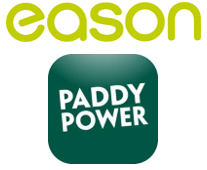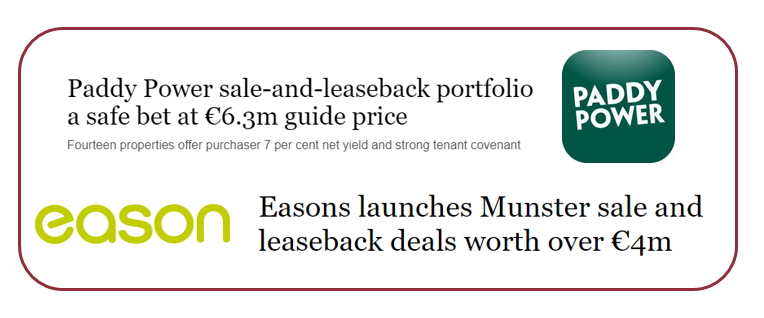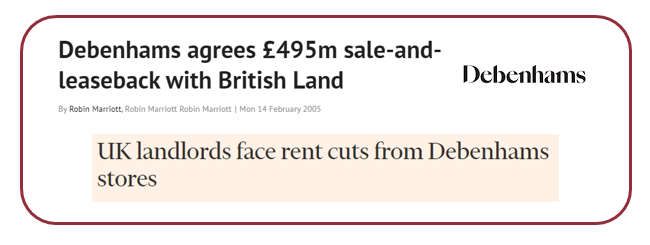Sale and Leaseback – PaddyPower & Easons

The recent news of PaddyPower putting a portfolio of its betting shops up for sale with the plan to lease these back over 15 years has put the focus back on sale and leaseback transactions as part of business financing. We take a look below at this source of finance, why it is attractive to certain companies and what it entails.
What is it?
A sale and leaseback transaction involves the sale of a property (or a collection of properties) to a third party combined with an agreement to lease those properties back for an agreed period of time at an agreed rate. This results in the seller receiving a large inflow of capital from the sale (hence it is a source of finance) but also continuing to have the use of the asset for its business operations which avoids any disruption.
What properties are suitable?
There are a vast array of properties that would be suitable for these types of deals. The key characteristic looked for is a building that would have broad appeal should the original lease as part of the transaction expire – so the third party can lease this out to some other party. Some can be one off buildings (e.g. head offices) while others can be a portfolio of buildings (e.g. Easons stores, PaddyPower shops, AIB branches). Very specific or niche use properties, such as special manufacturing factories may not be suitable as they may only be of value to that particular business to use/lease.
Sale and Leaseback in Practice (recent and not so recent!)
Two good recent examples of using this form of financing have been PaddyPower and Easons. Notice that both businesses would have strong strategic locations (main streets, good footfall, retail units) for these properties for sale thus attracting investors.
As an interesting aside, sale and leasebacks were also used by our two pillar banks (AIB & BOI) at the height of the last boom. During the recession, the banks even managed to buy back some of the branches they had previously sold! See links below for more information.

What makes these transactions attractive?
In the current business and economic environment, sale and leaseback transactions have been attractive to both investors and to businesses. From an investor point of view, the low interest rate environment has driven the search for more attractive higher yielding investments such as those offered by sale and leaseback transactions. PaddyPower are currently advertising their portfolio to potential investors at a net yield of approximately 7% which compares favourably to current deposit rates.
From the company’s own perspective there are also a number of potential advantages with this source of finance;
- Ability to release the equity built up in assets while also still getting use of those assets;
- Better leverage in setting lease terms, conditions and covenants;
- Potential tax savings in that the lease payments will be tax deductible unlike loan repayments;
- Access to credit – bank credit can still be expensive and hard to get for many. Selling asset provides more funding than you can get via traditional secured loan (e.g. 100% vs 60-70%)
However, it is important to note that it is not all positives and there are a number of things for companies to consider before they go ahead with a sale and leaseback. The business is still selling the property and there is a risk the lease may not be renewed at end and the business can lose this location
Debenhams provide a good example of the downside whereby they undertook a sale and leaseback of their stores in the early 2000s and locked into expensive long term leases. When the downturn came, they had little flexibility with these leases which impacted the profitability of a lot of stores. Had they maintained ownership of the stores themselves, it may have afforded much more flexibility along with not having the level of fixed costs associated with lease payments.

Accounting for Sale and Leaseback Transactions
The world of lease accounting is currently going through a lot of changes with IFRS16 replacing IAS 17 as the new standard for leases internationally. This will have a big impact on the accounting implications for many sale and leaseback transactions as the option to classify a lease as operating, and thus keep it off-balance sheet, is no longer available under IFRS 16.
The links below give some more detail for anyone who is interested in the detail of how sale and leaseback transactions are accounted for under IFRS16.
Grant Thornton – Sale and Leaseback

no comments